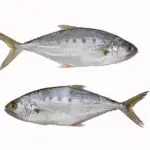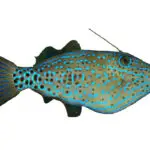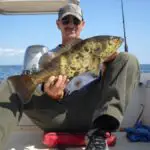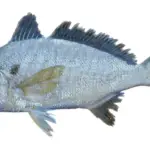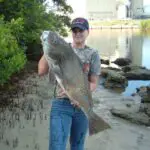If you fish anywhere along the Atlantic Ocean, Gulf of Mexico, or even the Caribbean..you likely know that Pinfish are a premium live bait!
In this article, I’m going to cover how to keep pinfish alive and fresh, so you can catch more snook, tarpon, redfish, cobia…and stop wasting bait!
Whether you buy your pinfish from a bait shop, or catch them yourself…treat your bait well and you will be rewarded!
This post may contain affiliate links. As an Amazon Associate, I earn from qualifying purchases
Table of Contents
- How Long Can You Keep Pinfish Alive?
- How To Keep Pinfish Alive Overnight (or Longer)?
- How Many Pinfish Can Live in a Bucket?
- What Do You Feed Pinfish?
- Bait Pen Tips and Tricks
- What To Feed Pinfish in Bait Pens
- Related Posts
How Long Can You Keep Pinfish Alive?
While many anglers struggle to keep bait fish alive for over six hours, pinfish can be kept alive for over four days with proper planning and maintenance. Maintaining the proper water temperature, as well as oxygen and ammonia levels is key to pinfish longevity.
The longest pinfish should be kept in mobile five-gallon bucket setups is 24 hours to be safe.
Alternatively, home fish tanks and containers have been reported to keep pinfish alive for five days or longer.
And large submerged bait pens can keep pinfish alive for weeks!
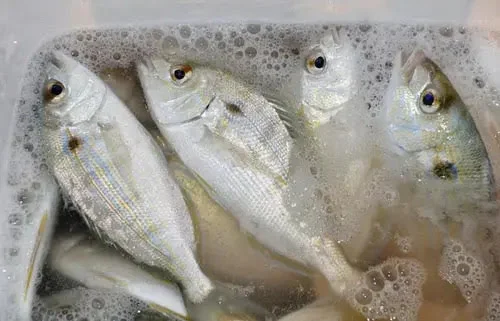
There are a handful of key principles that should be applied to pinfish setups of all varieties. Read on below to find out more.
How To Keep Pinfish Alive Overnight (or Longer)?
The best way to keep pinfish alive for a longer period is to use water conditioners to keep ammonia levels in check and increase the amount of circulation in the water. Better water circulation leads to better oxygen levels and a healthier environment for the pinfish.
There are 3 main factors to keep in mind when trying to keep pinfish alive (or any live bait such as mullet, mojarras, pigfish, or even shrimp!).
They are:
- Ammonia
- Oxygen
- Temperature
Let’s take a closer look at each of these factors below.
Ammonia
The first factor to keep in mind when it comes to maintaining healthy pinfish and increasing their lifespan is the level of ammonia in the water.
Ammonia comes from the fish defecating in the water, and the chemical builds up over time making the water murky and uninhabitable.
The first way to maintain ammonia levels is to change out the water in your pinfish bucket or tank.
After moving the fish into a small holding tank or container, completely drain the dirty water and replace it with new saltwater before returning the fish to the bucket or tank.
Some anglers opt to not do a complete water replacement and instead do a partial water swap, or better yet, use an aerated bait bucket.
For pinfish, I like the oversized 10-quart Frabill Magnum Bait Bucket.

To complete a partial change of the pinfish’s water, simply drain out a majority of the dirty water while being careful not to pour out the fish. Leave just enough water for the pinfish to float in, and fill the rest of the container with new ocean water.
There are times when new ocean water is either unavailable or not convenient, and some anglers do not have time to run back and forth to a saltwater source for full or partial water swaps.
There are store-bought water conditioners that are best for these cases.
Available in both tablets and in liquid form, store-bought water conditioners work to clean the water of ammonia and prevent further ammonia buildup.
These water conditioners can be purchased at aquarium supply and pet shops, and they are the simplest solution of any.
Oxygen
The second main factor in maintaining a healthy environment for sustainable bait fish is the oxygen levels in the water.
Many anglers opt to use only a small fish tank bubbler, which is usually not sufficient enough to impart the necessary amount of oxygen for the pinfish.
The best way to oxygenate the water for pinfish is a combination of aeration and a small water pump. Pumping the water up and over the water’s surface allows for a greater dispersion of oxygen throughout the water, and is far superior to a bubbler by itself.
Small water pumps are very affordable and can be purchased online or at aquarium supply stores. Some anglers do not have the space or resources to set up a pump for long-term use and are only able to use a portable aerator.
In instances where only a bubbler oxygenating device can be used, it is best to use one with the largest bubbling stone available. Most cheaper bubblers feature a small stone that does not produce a large surface area of bubbles.

By choosing a bubbler with a large bubble stone, more oxygen is imparted into the water at once.
Another option is to simply upgrade your current bubbler stone and hose line to a larger disc bubbler. These sit on the bottom of your bucket or container and put out 10x the amount of bubbles as other stones.
Some anglers prefer to use multiple bubblers in a single tank or bucket, though this is a less efficient solution that will require more power to produce a similar result.
Temperature
The third factor that will lead to an increased pinfish lifespan is the temperature of the water.
While it is not necessary to maintain a constant and exact water temperature, it is always best to keep the baitfish in water that is slightly cooler than where they were caught.
Pinfish and other small baitfish overheat very easily! Especially in a crowded bait bucket.
Aim for a water temperature between 70 and 76 degrees Fahrenheit to keep your pinfish from overheating.
The best way to maintain the water temperature in a bucket or tank is to use a digital water temperature controller, which costs between $20 to $30 and is the easiest solution. These temperature controllers are best for home tanks, as they require a power outlet to operate.
For mobile baitfish setups, a more low-tech solution is the best option. Submerging bottles of frozen water into the bucket is the best way to cool the water without changing the salinity levels.
Adding ice directly to the water causes it to melt and dilute the water around it! Don’t do this!
Most anglers will freeze two or three bottles of water before a fishing trip, and pop one into the water every hour or so as needed.
It is essential to remove the bottles over 30 minutes before using the pinfish, as they will be less active in colder conditions.
How Many Pinfish Can Live in a Bucket?
While many anglers will squeeze as many pinfish as possible into a five-gallon bucket, it is better to limit the amount of pinfish in order to keep them in good health.
In a standard 5-gallon bucket, I would not put more than a dozen small pinfish (3 inches or less) and no more than 8 full-size pinfish (5-6 inches).
If you are fishing with a group of buddies that will be using lots of bait fish in a short period of time, it is acceptable to fill the bucket with many pinfish, as they will have less time to pollute the water and die.
For pinfish that will be bucket-kept for extended periods of time, it is advisable to fill the bucket with no more than a dozen pinfish.
Less fish in the bucket means less ammonia being secreted, and the water will stay cleaner and inhabitable for a longer period of time.
A lighter concentration of pinfish will also require less oxygen, and the fish are less likely to become crowded and stressed out.
Pinfish defecate at a faster rate when put under stress, and giving them a bit of elbow room will keep them more comfortable and the water cleaner.
What Do You Feed Pinfish?
The best food for pinfish includes shrimp and squid, as well as store-bought “bait food.” Bonito flakes also make great feed for pinfish, and cut bait is another great option. Frozen shrimp and squid work fine, but fresh dead will supply the bait fish with more nutrients.
While many anglers do not give much thought to what they feed their bait fish, a well-fed pinfish will be more active on the line and attract more predator fish.
Healthy and active bait fish can be the difference between a bad day of fishing and catching a monster snook!
Bait Pen Tips and Tricks
Using a bait pen is a great way to keep bait fish for extended periods of time, and requires far less maintenance than a home or bucket set-up to achieve the best possible living conditions for the fish. Pinfish kept in bait pens are often the healthiest and most active type for bait use.
Bait pens allow the pinfish to stay in their natural water source without escaping the angler, or being eaten by larger predator fish.

While bait pens are fairly easy to use, many anglers have a tendency to stock too many pinfish in a bait tank leading to overcrowding.
Overcrowding can cause the pinfish to become stressed out and rub up against the side of the pen, causing them damage. Pinfish can also nip and bite at each other when overcrowded, as they become disoriented and competitive over food.
What To Feed Pinfish in Bait Pens
While the food being given to pinfish in bait pens should remain the same as keeping them in tanks or buckets, feeding methods will need to be adjusted.
Pinfish eat a varied diet, and there are many feeding options to keep them sustained and healthy.
Squid, shrimp, cut bait, bonito flakes, and store-bought bait feed are great options to feed pinfish in bait pens and large holding tanks.
You May Also Like: How To Keep Mullet Alive (Easy Tips & Tricks)

Growing up in Florida, I’ve been surrounded by saltwater my entire life…and I love sharing my passion with others.
To learn more about why I started Saltwater Mecca, visit the ABOUT page.
Thank you for reading this article. Browse around & have some fun!

